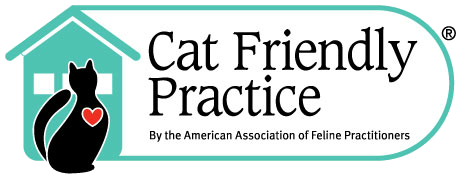|
Canine Influenza
By Dr. Cynda Crawford, Clinical Assistant Professor in the Maddie's Shelter Medicine Program at the University of Florida College of Veterinary Medicine
What is canine influenza?
Canine influenza is a highly contagious respiratory infection of dogs caused by a novel influenza A subtype H3N8 virus that was first discovered in 2004.
Where does canine influenza occur?
Canine influenza has been documented in 30 states and the District of Columbia. At this time, the canine influenza virus (CIV) is very prevalent in many communities in Colorado, Florida, New York, and Pennsylvania.
What type of infection does CIV cause?
Similar to influenza viruses that infect other mammals, canine influenza virus causes an acute respiratory infection in dogs. It is one of several viruses and bacteria that are associated with canine infectious respiratory disease, or what's commonly referred to as ?kennel cough?. CIV infection can cause respiratory disease by itself or along with other canine respiratory pathogens. Unlike human influenza, canine influenza is not a ?seasonal? infection. Infections can occur year round.
What are the clinical signs of canine influenza?
Like influenza viruses for other species, CIV causes flu-like illness consisting of cough, sneezing, and nasal discharge. Virtually all exposed dogs become infected; about 80% develop flu?like illness, while another 20% do not become ill. Fortunately, most dogs recover within 2 weeks without any further health complications. However, some dogs progress to pneumonia, which is usually due to secondary bacterial infections. While the overall mortality rate for canine influenza is low, the secondary pneumonia can be life-threatening. There is no evidence for age or breed susceptibility for developing pneumonia during canine influenza.
Who is susceptible to canine influenza?
Because canine influenza is due to a virus that is novel to the canine population, dogs lack preexisting immunity to the virus. Dogs of any breed, age or health status are therefore susceptible to infection. Although studies have not verified, it is likely that dogs that have recovered from infection retain immunity to re-infection for an undetermined time period. Canine influenza is most likely to spread in facilities where dogs are housed together and where there is a high turnover of dogs in and out of the facility. Dogs in shelters, boarding and training facilities, day care centers, dog shows, veterinary clinics, pet stores and grooming parlors are at highest risk for exposure to CIV, especially if these facilities are located in communities where the virus is prevalent. Dogs that mostly stay at home and walk around the neighborhood are at low risk. CIV does not infect people, and there is no documentation that cats have become infected by exposure to dogs with canine influenza.
How is canine influenza transmitted?
As with other respiratory pathogens, the most efficient transmission occurs by direct contact with infected dogs and by aerosols generated by coughing and sneezing. The virus can also contaminate kennel surfaces, food and water bowls, collars and leashes, and the hands and clothing of people who handle infected dogs. Fortunately, the virus is easily inactivated by washing hands, clothes and other items with soap and water.
How is canine influenza diagnosed?
Canine influenza cannot be diagnosed by clinical signs because all of the other respiratory pathogens cause similar signs of coughing, sneezing, and nasal discharge. For dogs that have been ill for less than 4 days, veterinarians can collect swabs from the nose or throat and submit them to a diagnostic laboratory that offers a validated PCR test for canine influenza virus. The most accurate test recommended for confirmation of infection requires the collection of a small blood sample from the dog during the first week of illness, followed by collection of another sample 10 to 14 days later. The paired serum samples are submitted to a diagnostic laboratory for measurement of antibodies to CIV that were formed in response to infection.
How is canine influenza treated?
Since canine influenza is a viral infection, treatment consists mainly of supportive care while the virus runs its course, much like for human influenza. Dog owners should consult with their veterinarians if they think their dog has canine influenza. The veterinarian can determine what type of supportive care is needed, including whether antibiotics should be given for secondary bacterial infections. Dogs with pneumonia most likely require more intensive care provided in a hospital setting under the supervision of a veterinarian.
Is canine influenza contagious?
Like influenza infections in other species, canine influenza is highly contagious. Infected dogs shed virus in their respiratory secretions for 7 to 10 days, during which time the dog is contagious to other dogs. Infected dogs that do not show clinical signs are also contagious. Once the virus has run its course, the dog is no longer contagious. Therefore, we recommend that dogs with canine influenza be isolated from other dogs for two weeks to err on the conservative side. CIV does not cause a permanent infection.
Is there a vaccine for canine influenza?
In May 2009, the USDA approved the licensure of the first influenza vaccine for dogs developed by Intervet/Schering Plough Animal Health Corporation. The canine influenza vaccine contains inactivated whole virus, so there is no chance that the vaccine itself can cause respiratory infections. During tests to evaluate vaccine performance, there were no side effects or safety issues in a field trial including more than 700 dogs ranging in age from six weeks to 10 years and representing 30 breeds. The vaccine is intended as an aid in the control of disease associated with CIV infection. Although the vaccine may not prevent infection, efficacy trials have shown that vaccination significantly reduces the severity and duration of clinical illness, including the incidence and severity of damage to the lungs. In addition, the vaccine reduces the amount of virus shed and shortens the shedding interval. This means that vaccinated dogs that become infected have less illness and are not as contagious to other dogs. These benefits are similar to those provided by influenza vaccines used in other species, including humans. The canine influenza vaccine is a ?lifestyle? vaccine, in that it is intended for dogs at risk for exposure to CIV, including those that participate in activities with many other dogs or are housed in communal facilities, particularly in communities where the virus is prevalent. Dogs that may benefit from canine influenza vaccination include those that are already receiving the kennel cough vaccine for Bordetella because the risk groups are the same. Dog owners should consult with their veterinarian to determine whether their dog's lifestyle includes risk for exposure to CIV, and the protection provided by the canine influenza vaccine.
| 






